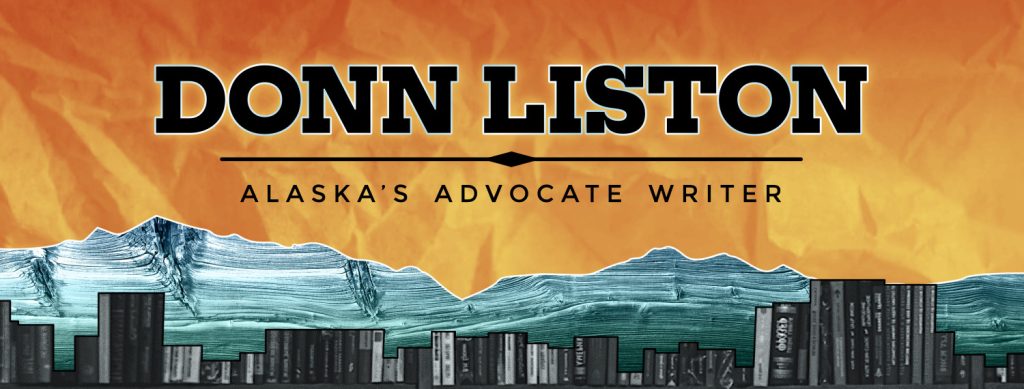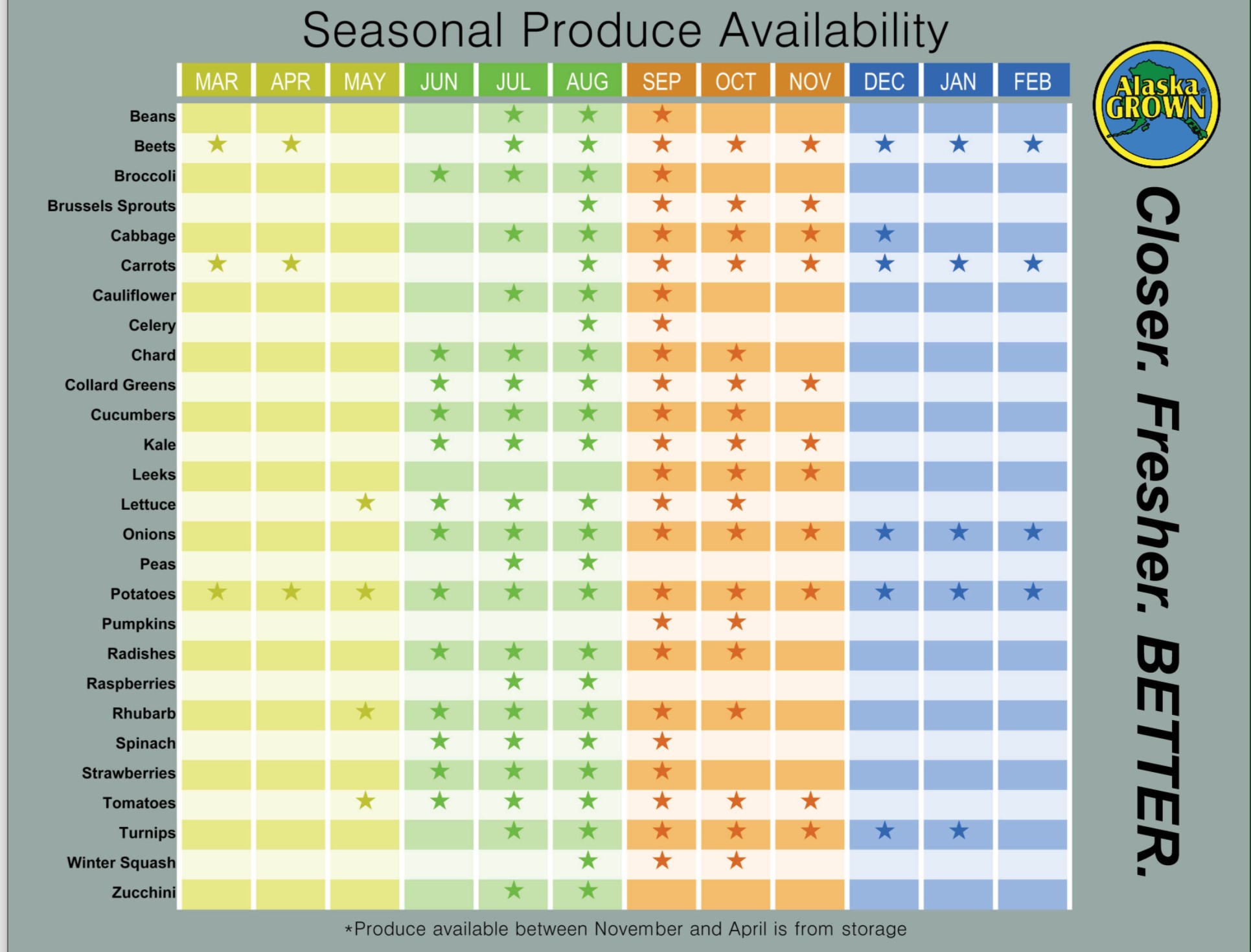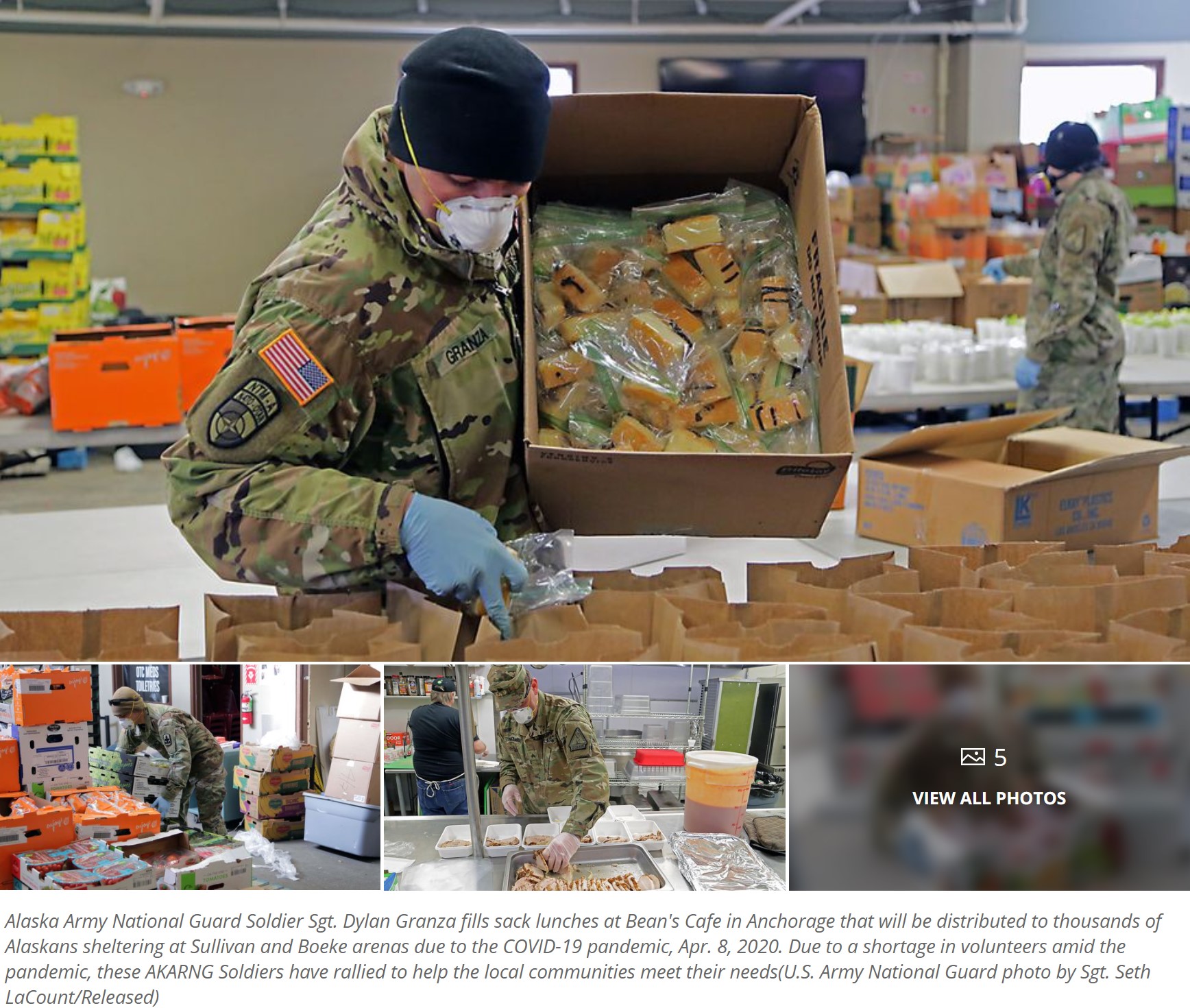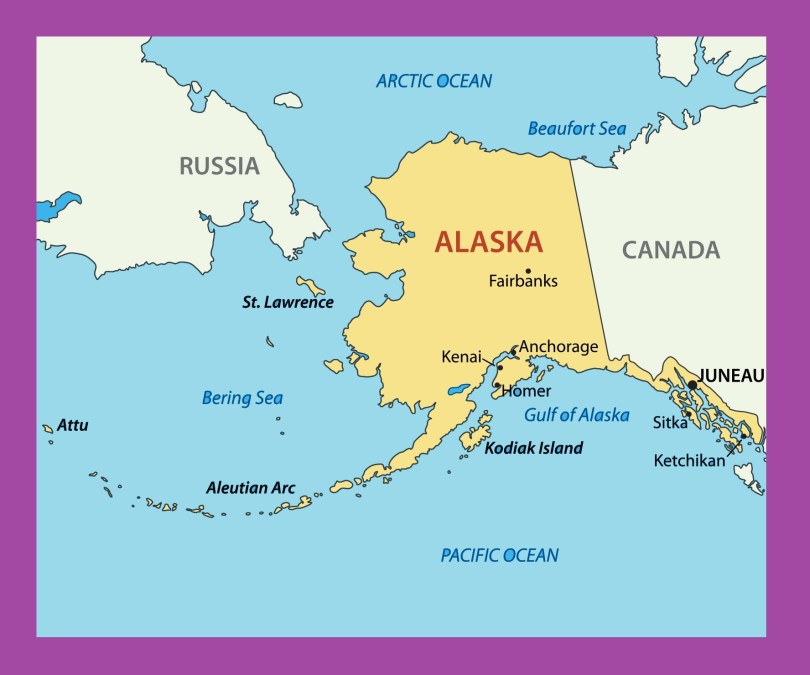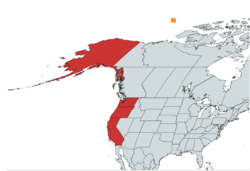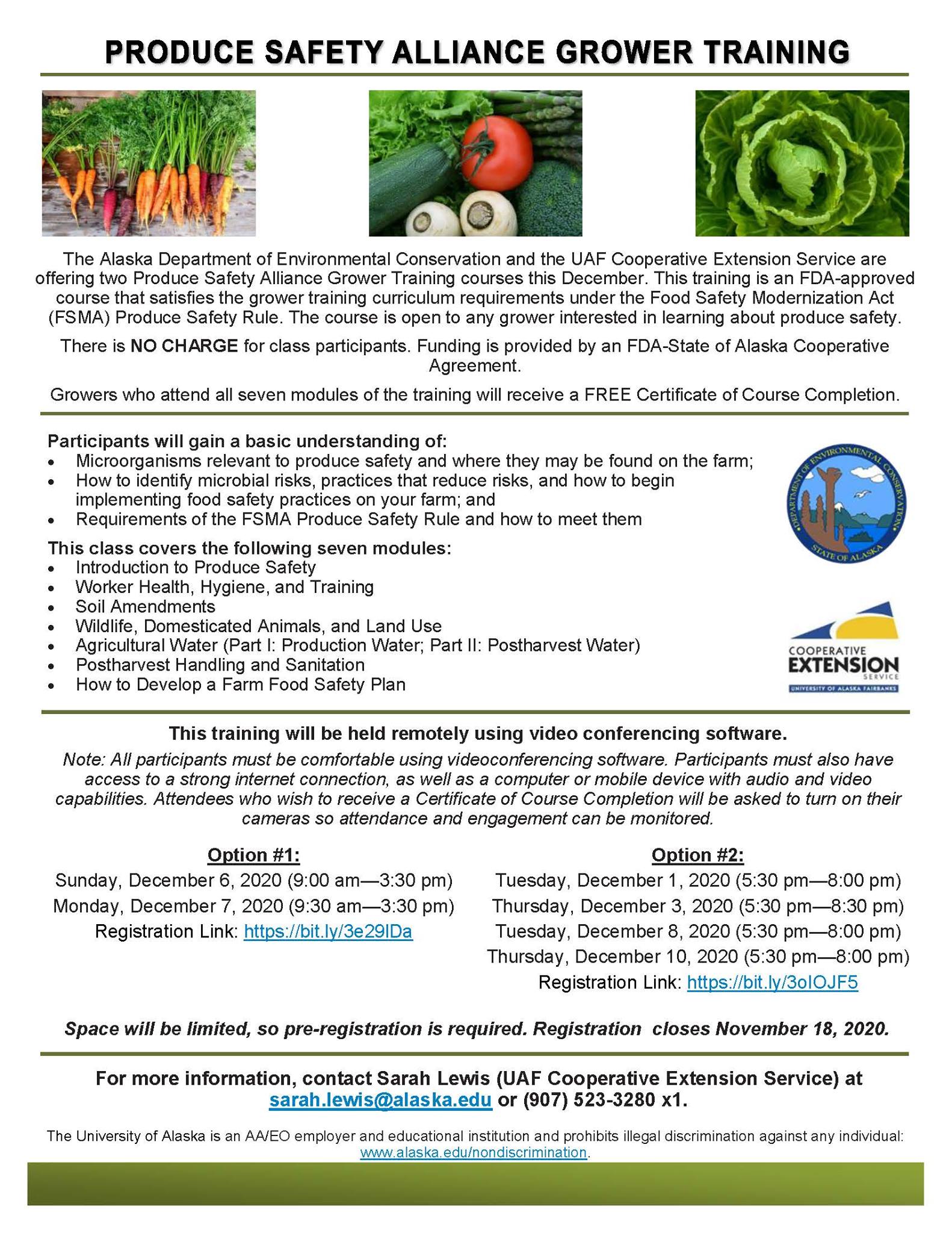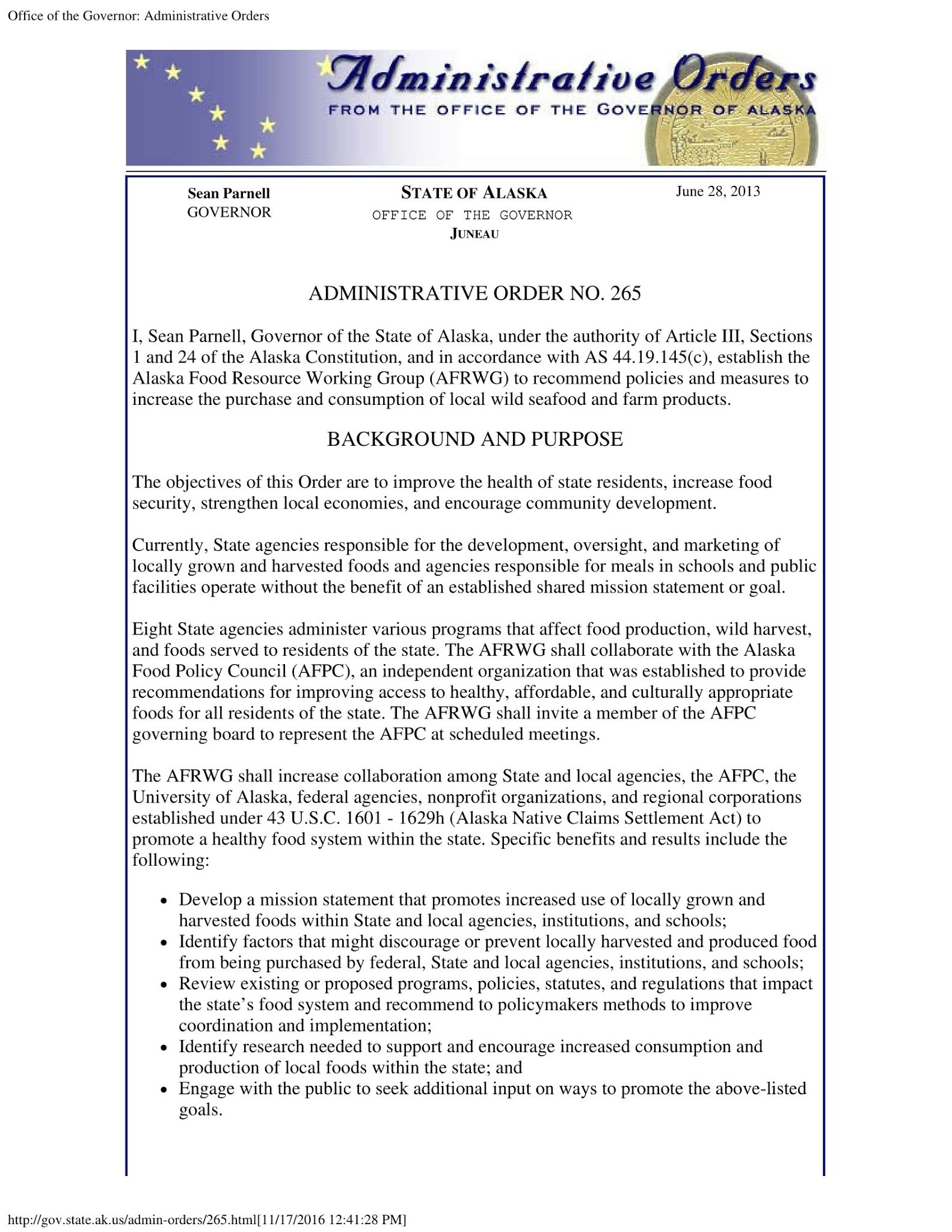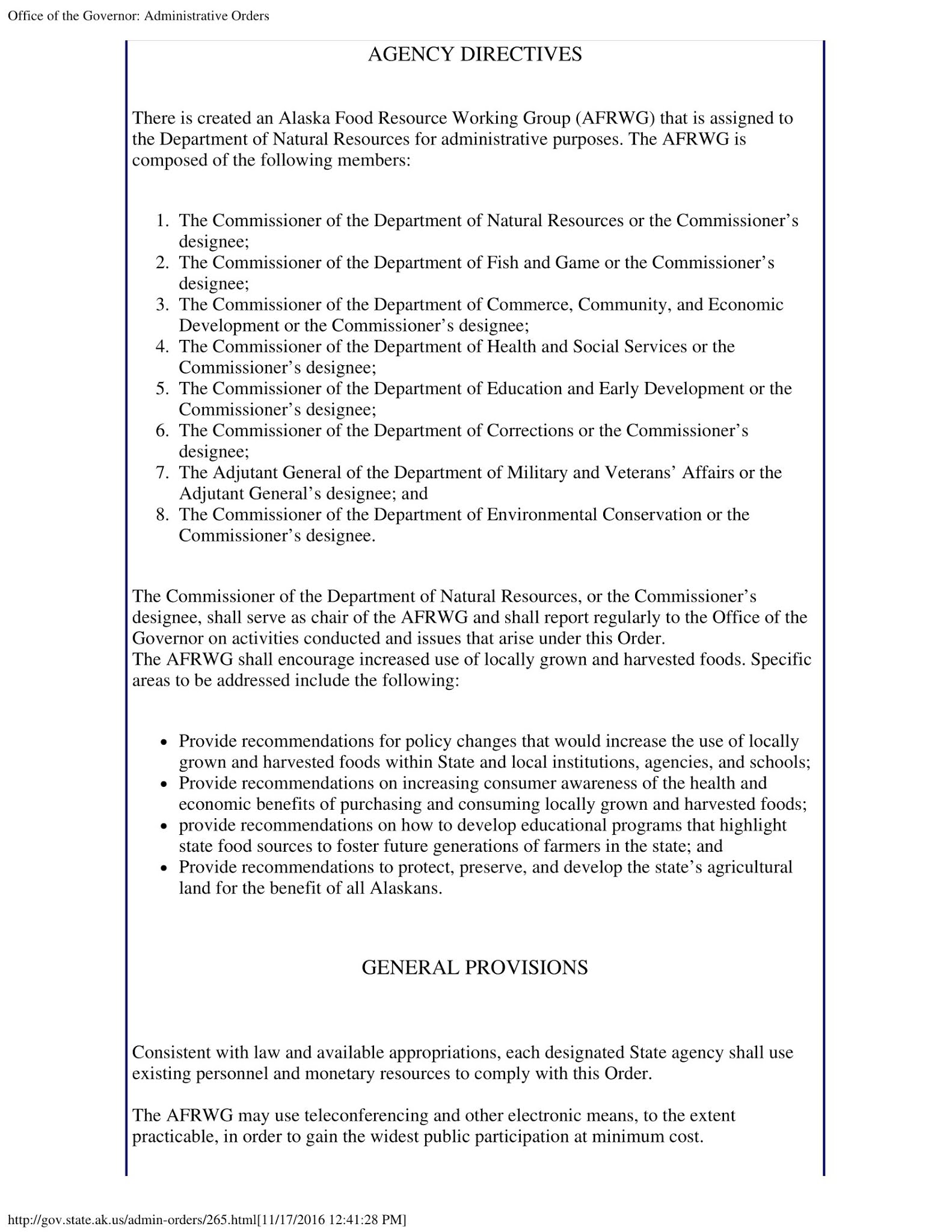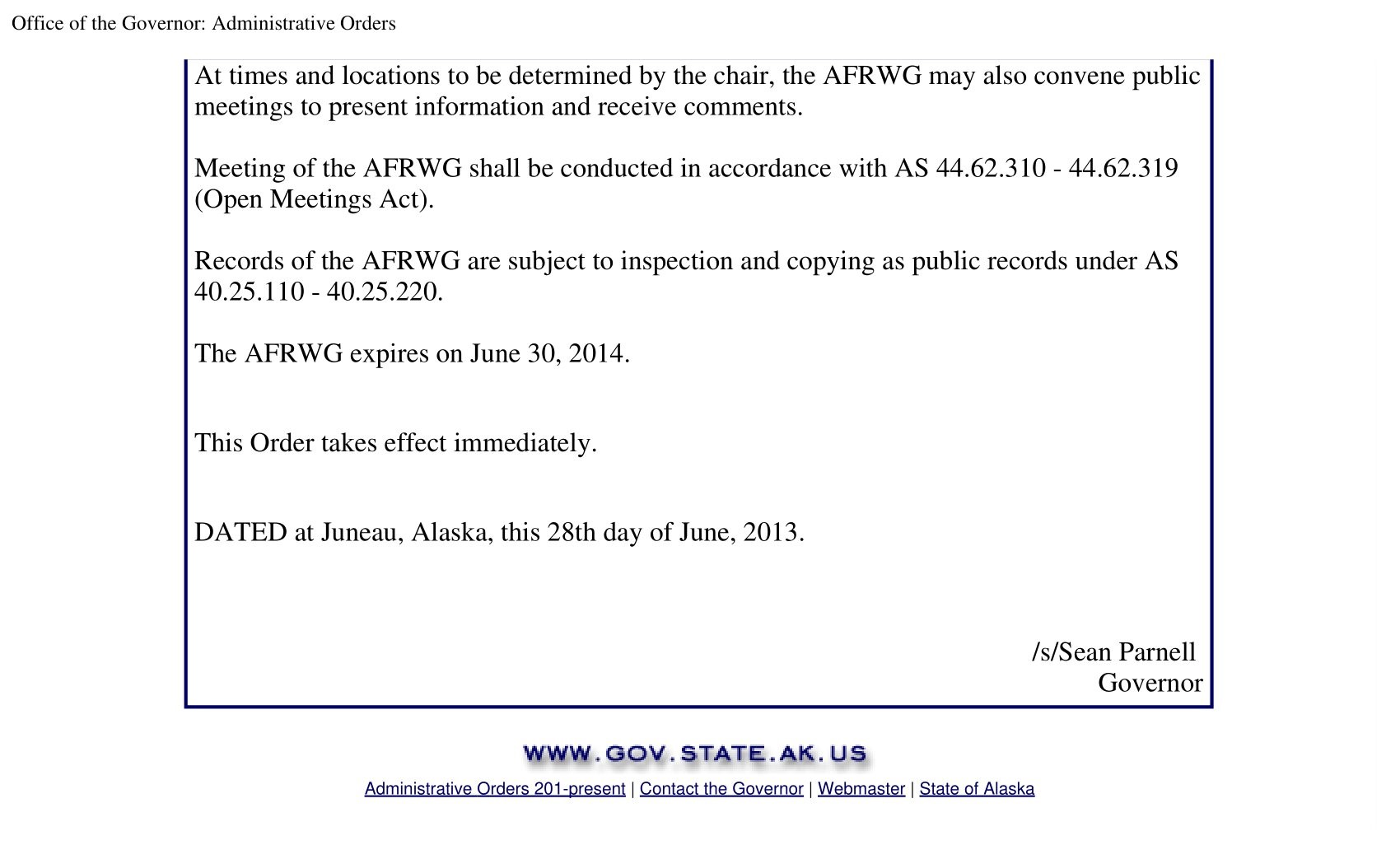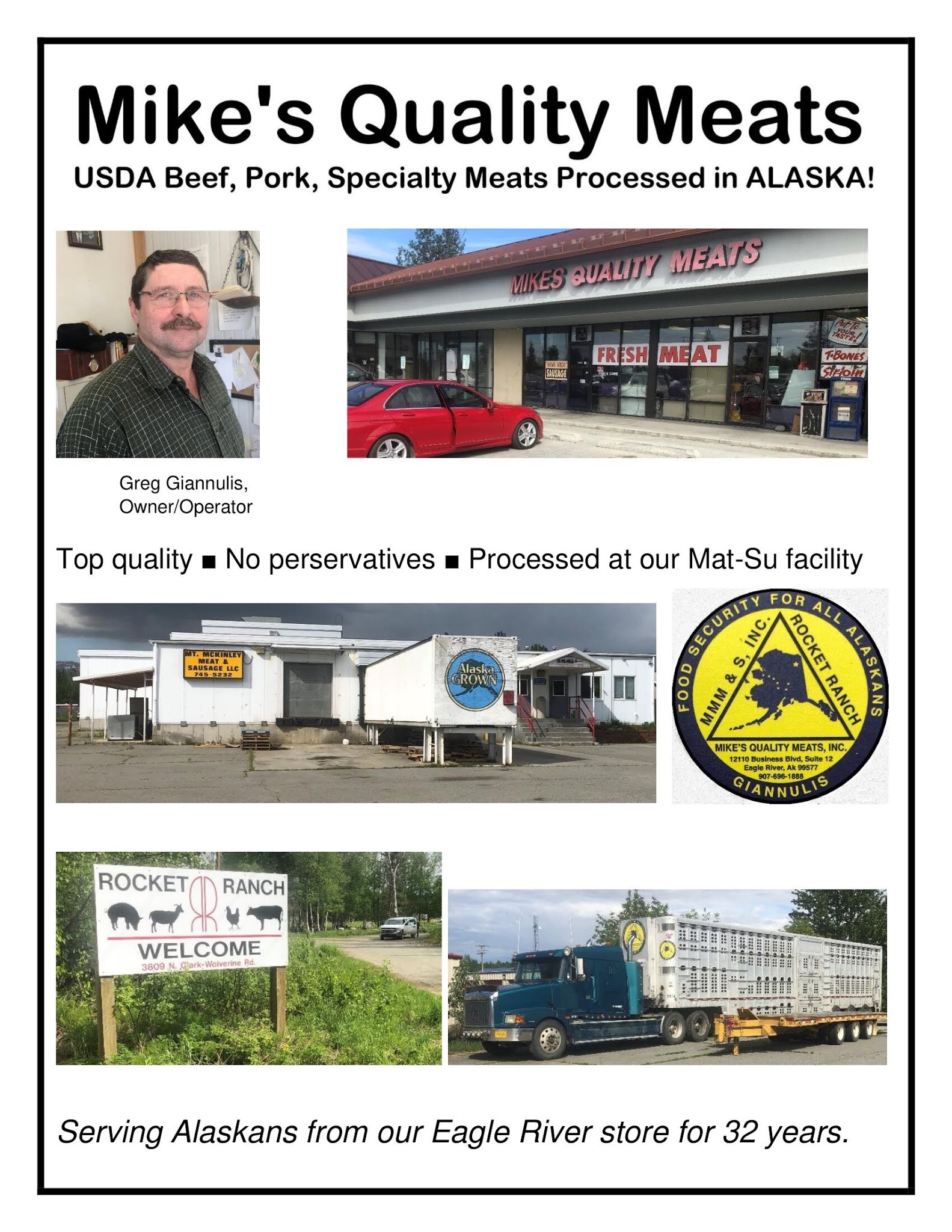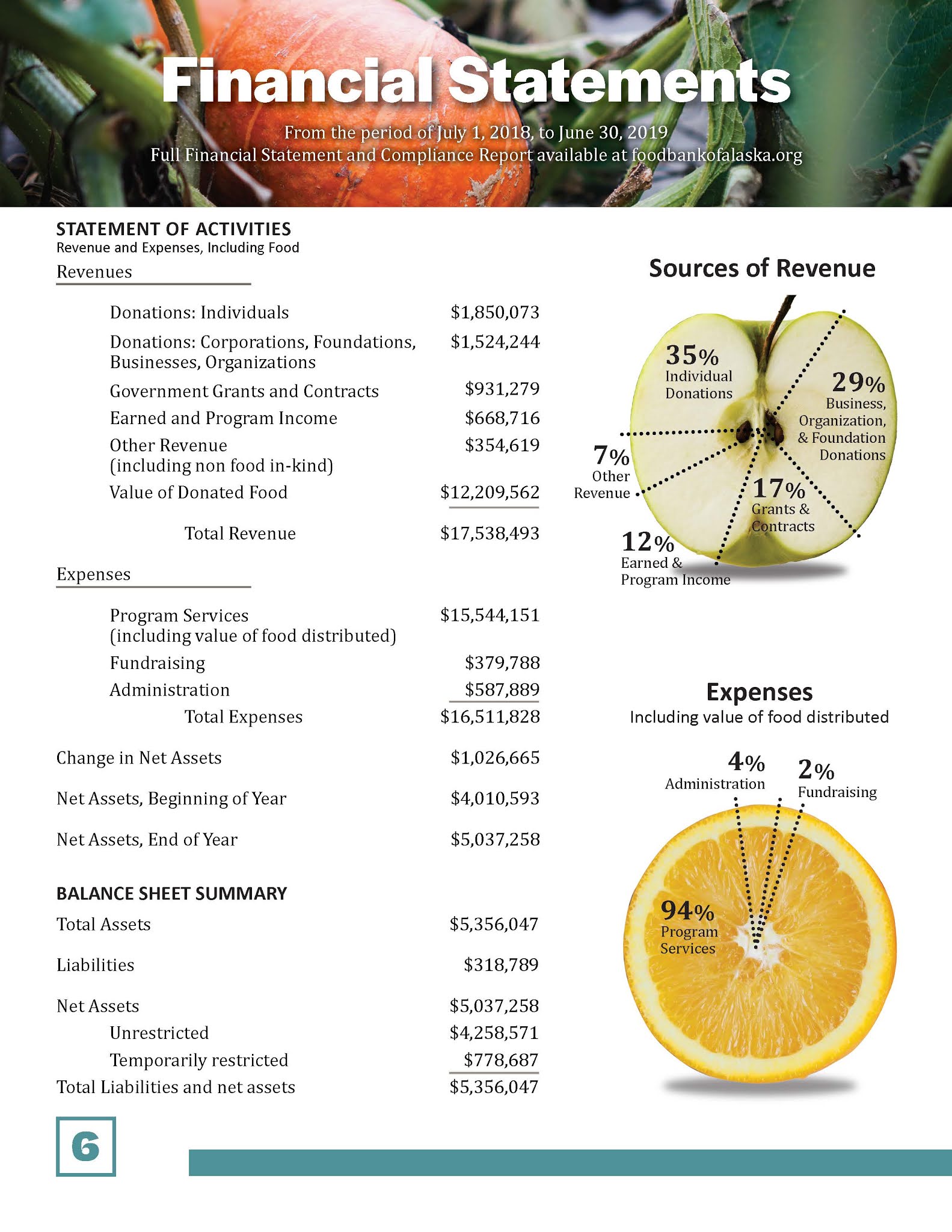Realities of Alaska Food Security
(2020©donnliston.co)
Family
with food on the table have many problems.
Family
with no food on the table have one problem.
–Chinese Proverb
Let’s look at the big picture of Alaska Food Sustainability. The idea of having enough food available for everybody in Alaska doesn’t seem to be an outlandish expectation, given our low population over a large landmass surrounded by abundant ocean, the concept seems reasonable. But we who live here must ask: At what population level will we find ourselves vulnerable to food shortages due to events and
circumstances out of our control?
Look at what happened in the 2020 China Pandemic. Suddenly store shelves were empty and we were told by elected officials to “hunker down.”
Longtime Alaskans already know some of us are more prepared for disaster than others as a matter of fact. Indigenous people experienced life on much more tenuous terms and food security required a major portion of their waking hours. They live closer to the land with their “subsistence lifestyle” and food security is an understood part of their culture in rural Alaska.
But for many Alaskans, food comes from the grocery store and chocolate milk comes from brown cows. The ability to catch wild fish and hunt game animals large enough to fill a freezer may provide a false sense of food security for the mainstream of Alaskans living in Southcentral. During the China Pandemic beginning officially in March of this year, we also learned toilet paper doesn’t grow on trees.
https://khqa.com/news/coronavirus/alaska-national-guard-initiates-proactive-response-to-coronavirus-pandemic
Challenges of Feeding All Alaskans
The size of Alaska–one-fifth the size of the continental USA, with a population well below one-million people residing mostly along the railbelt corridor–creates a challenge. The fact Alaska is mostly located in the Arctic Climate Zone between Russia and Canada provides another challenge. But human nature provides the greatest challenge; we eat what we like to eat.
Seattle is the choke point for Alaska food imports. From there most food shipments land on the docks at Anchorage. Likewise, the fleet of ocean fishers are mostly ported on the west coast–Washington, Oregon, California. The fish we buy in Alaska was likely processed Outside and returned to us at some expense. We are captive to the west coast states who profit greatly from Alaskan natural resource abundance.
The catastrophic loss of the Anchorage Dock, or destruction of either of the two primary highways out of Anchorage, could have serious consequences for food security.
From a practical perspective we also know Food Stamps won’t buy as much for people on the government dole.
So, in 2014 the Alaska Department of Health and Social Services contracted with Crossroads Resource Center in Minneapolis, Minnesota, to research and report to
the State of Alaska on Food Security. The report was produced that July by Ken Meter and Megan PhillipsGoldenberg after no doubt a wonderful adventure holding spring town hall meetings around the state.[1]
Since we get most of our food from Outside, why shouldn’t we get our advice about food security from Outside too? In fact, it is simple reality that the colony of Alaska has a natural dependency on the United States for damn near everything. Having adequate food to support the flood of Outside teachers and public employees to service this great area is part of the deal. The fact everything costs more gives those pilgrims bragging rights for high pay jobs that demonstrate independence from the motherland during their Adventures.
In their report, the Minnesota researchers explain how our primitive Alaska Food Security system is different than civilized places, as documented by their UA counterparts:
Often the definition of “food security” in the Lower 48 is more focused on ensuring that low-income residents have a secure food supply. Increasingly this term has come to mean that low-income communities produce food for themselves.
In this report “food security” is used in the Alaska sense, captured best by University of Alaska researchers below.
In the context that we use it here, food security describes more than merely whether sufficient food is being produced, or a one-size- fits-all food-nutrition relationship, and incorporates all of the various ways in which a food system supports health in its various biophysical, social, and ecological dimensions (Loring & Gerlach, 2009). These include matters such as the importance of certain foods, food choice, local perceptions of hunger, uncertainty and worry about food safety or shortages, and any other psychosocial, sociocultural, or environmental stresses that result from the process of putting food on the table (S. Maxwell, 2001).
But that’s not all.
In rural, predominately Alaska Native communities, for example, wild fish and game are important for food security, not just because they are readily available, but also because they are important to the preservation and transmission of traditions and cultural practices, for the maintenance of social networks and interpersonal relationships, and for supporting individuals’ sense of self-worth and identity (Fienup-Riordan, 2000; Loring & Gerlach, 2009; Loring, Gerlach, & Harrison, 2013)
So there you have it: these challenges for food security are dependent on whether rural Alaskans’ traditional food security is fulfilled.
Alaska researchers might arrive at a different conclusion.
But, while patronizing the minority population of Alaska these researchers some six plus years ago could not deny there is a bigger picture presented to them by the numbers :
The most critical concern Alaskans hold for the future of food is the security of its food supply.
95% of the $2 billion of food Alaskans purchase1 is imported — meaning $1.9 billion leaves the state each year as Alaskans eat. Moreover, this food is shipped through long supply chains. Essential items arrive by airplane, barge, (container ship) and truck from Mexico, Europe, Asia, and the Lower 48.
1 ISER calculates this total to be $2.5 billion. The more conservative figure was used. Travelers
in Alaska, of course, also purchase substantial amounts of food that are not included in these totals.
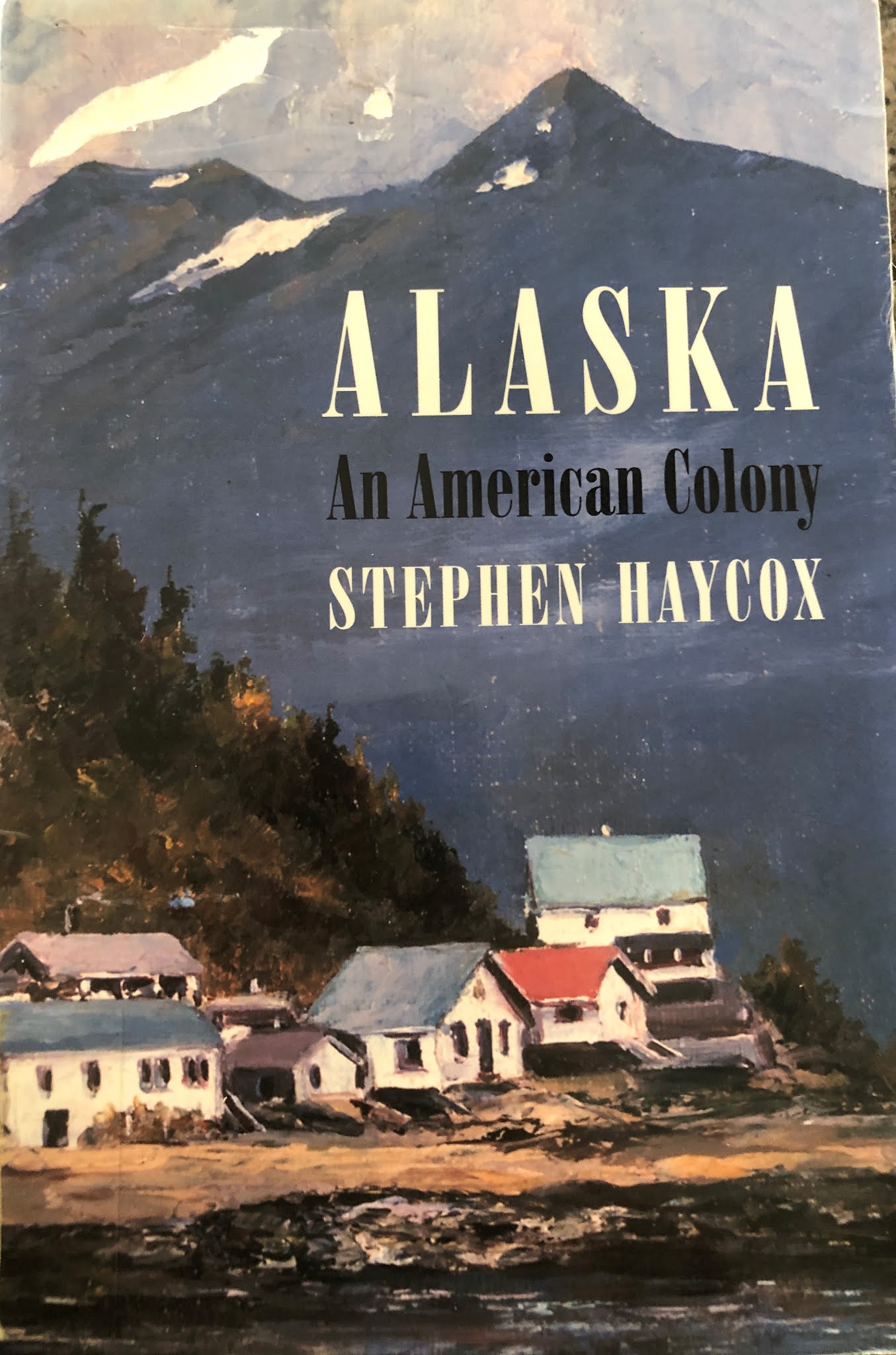 |
| In his book, Dr. Haycox explains the nature of Alaska’s historic colony relationship to the United States. |
What Alaskans Can Do to Improve Personal Food Security
Many of us have started gardens. My result has been pitiful but I will keep trying. Others are obviously doing much better from what I have seen at numerous Farmer’s Markets.
The University of Alaska Fairbanks Cooperative Extension Service has long been a source of information about Alaska agriculture. Between November 17 and December 22, 2020 they provided a free distance-delivered series on food security. http://bit.ly/AKFoodSecurity2020
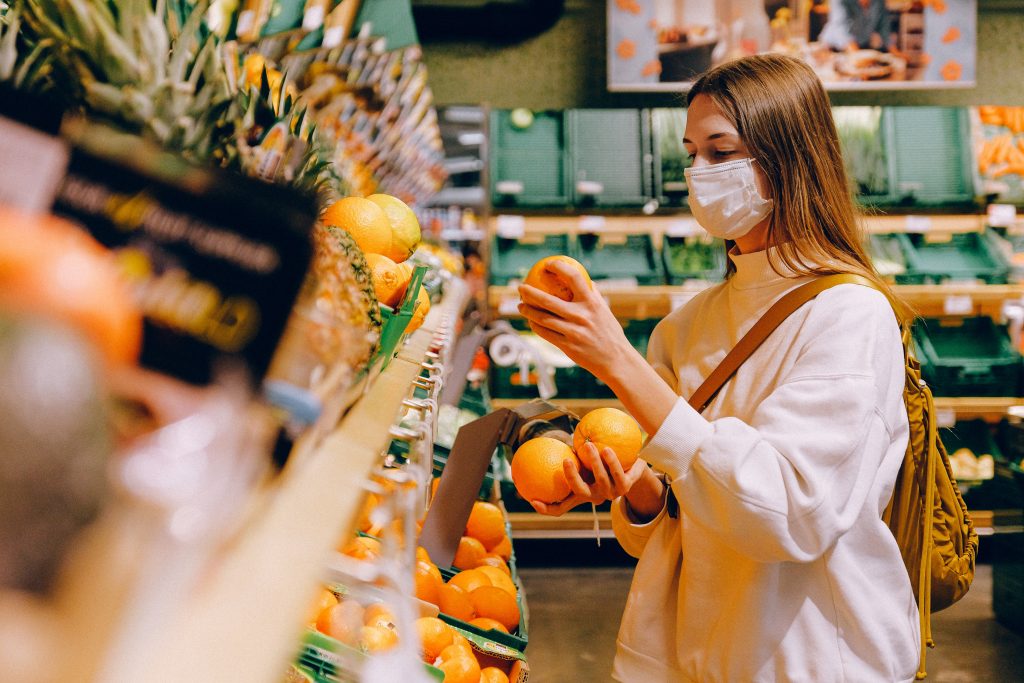 |
|
Topics of the webinars included:
· Starting and maintaining a home food pantry, Nov. 17
· Exploring home freeze drying, Nov. 24
· Chicken University, the basics on raising chickens, Dec. 1
· Gardening and food security, Dec. 8
· Smart grocery shopping, Dec. 15
· Home food preservation overview, Dec. 22
Additionally, UA is providing a grower training program for aspiring producers. This program is in cooperation with the Alaska Department of Environmental Conservation. As a poor gardener myself, over the years I have depended upon Fairbanks UA Cooperative Extension Office publications for this hobby, but a number of developing infrastructures
like Farmers Markets and Food Banks indicate blossoming interest in food
creation here.
Let’s Do what they Do Outside!
A decade ago the US Department of Agriculture, Farm Service Agency’s FSA News included this
notice of interest to Alaskans:
First Meeting of the Alaska Food Policy Council, May18-18, Anchorage
“A diverse group of Alaskan interested in forming the Alaska Food Policy Council will convene in Anchorage on May 18. These stakeholders are all experts in their field and critical to building a viable food system in Alaska. The Council will work together over the next two years to
develop comprehensive food solutions and strengthen our economy, our food security and our health. Mark Winne of the Community Food Security Coalition will be there to talk about his successful experience in other states and help Alaska kick off this collaborative effort. Please contact Diane Peck at 907.269.8477 or dianne.peck@alaska.gov for more info.”
{emphasis added}
Again, according to the UA Cooperative Extension Service that food policy council had ambitious plans for our food security well-being in line with other state, national and even
international efforts:
Working toward a healthy, secure food system that feeds all Alaskans.
The Alaska Food Policy Council works to strengthen Alaska’s food systems to spur local economic development, increase food security, and improve nutrition and health. The Council serves as a resource for information on local and state food systems, and works to identify and propose policy and environmental changes that can improve the production, processing,
distribution, health, security and safety of our food.
Visit our website:
http://akfoodpolicycouncil.wordpress.com/
Follow us on Twitter: https://twitter.com/AK_FoodPolicy
The AFPC recently completed a three-year strategic plan,10 in which it outlined five major goals and strategies in specific focus areas: access; economic development; safety, security and protection; sustainability; and public engagement.
Goals:
• All Alaskans have access to affordable, healthy (preferably local) foods.
• Alaska’s food-related industries have a strong workforce and operate in a
supportive business environment.
• Food is safe, protected and supplies are secure throughout Alaska.
• Alaska’s food system is more sustainable.
• Alaskans are engaged in our food system
Strategies:
1. Develop, strengthen and expand the school-based programs
and policies that educate about and provide healthy, local foods to schools
(e.g., Farm to School Program, Agriculture in the Classroom, traditional foods
in schools, school gardens).
2. Strengthen enforcement language in the Local Agricultural
and Fisheries Products Preference Statute (AS 36.15.050), also known as the
“Seven Percent” statute and Procurement Preference for State Agricultural and
Fisheries Products (Sec. 29.71.040).
3. Advocate and participate in the development of community
level and comprehensive statewide emergency food preparedness plan(s).
4. Develop AFPC’s role as research aggregator and resource.
5. Identify and support existing local food system leaders,
projects, events, and activities that support Alaska’s food system. While the
Council has a clear direction in which to aim its efforts, the order is a tall
one. Across the country and the world, food policy councils have formed at
local, state, regional, national, and even international level (the Food and Agriculture
Organization of the United Nations, for example, is the inheritor of the World
Food Council, originally formed in December 1974). There are at least seventeen
state-level food policy councils in the United States, and many more addressing
food policy at the local, usually municipal, level.
And here is the clincher:
Alaska faces many unique challenges when compared to these organizations, not least of which is the perception that Alaska is an “ice box” in which nothing can grow—or even should be grown. As the state’s many gardeners and farmers know, however, this perception is errant nonsense—yet it persists, perhaps as a subconscious prejudice, influencing policymakers in ways they may not even be aware of. Still, as Mother Earth News points out: The uniting feature among the various forms of food policy
councils is the connection they establish between food producers and consumers,
working to create relationships for a strong, local food web.[11]
11. “Food Policy Councils Advocate for Community
Food Security,” by Jennifer Kongs, 915/2010, at www.motherearthnews.
com/healthy-people-healthy-planet/food-policy-councilszb0z10zkon.aspx.
This might have been enough to bring tears to any Alaskan’s eyes but what did it do for actually bringing food security to Alaska? On March 18, 2013 the AFPC issued a press release informing media that the Alaska Senate had approved House Concurrent Resolution 1 (HCR 1)
Sponsored by Chugiak/Eagle River Rep, Bill Stoltz with no opposition, asking Gov. Sean Parnell to “create a food resource development workgroup whose mission is to advise the legislature on food policy issues and to bring together various food stakeholders for the purpose of promoting local food markets and increasing Alaska’s food security.”
Gov. Parnell did this, there were some meetings among appointed commissioners, and the workgroup dissolved one year later.
The Dismal Record of the State of Alaska
Endeavors by the State of Alaska to build agriculture infrastructure using oil resource revenues and revolving loan funds have mostly been dramatic failures. A December 1, 2003 report by the Alaska Division of Agriculture provides some Historical Perspective.[3]
The Mt McKinley Meat and Sausage Company (MMMS) was originally constructed as part of an ambitious plan to radically expand agriculture through state supported infrastructure development in the late 70’s and early 80’s. It was financed with $2 million of Agricultural Revolving Loan Fund (ARLF) monies in 1983 and then further financed with private funds of $1.2 million, to support cashflow.
A combination of factors, including an economic downturn
predicated by reduced oil prices, a precipitous drop in grain prices, and a
change of administration brought about the abandonment of the concept of
agricultural infrastructure expansion. Many projects were abandoned, such as
the grain elevator in Seward and the slaughterhouse facility in Fairbanks. Dairy farms went into foreclosure, as did the MMMS. The ARLF, in second position to the private lender, purchased the asset in a foreclosure sale in 1985.
In other words, the State of Alaska appropriately quit throwing good money after bad after decades of failure.
The State had taken over this valuable MMMS asset and run it into
the ground using prisoners to subsidize operation losses, slaughtering minimum numbers of animals under the oversight of a team of
managers. This is a familiar scenario to anyone who has observed any of our top-down-from-Juneau state departments or our public education factories. When the commissioner of the Department of Corrections requested reimbursement from the Division of Agriculture for losses to Alaska Correctional Industries, and for staff due to operating shortfalls, the director decided to look at alternative operating options.
A group of Mat-Su farmer/businessmen decided they could run the facility better if the state sponsored them to run it by committee as Denali Meat Company. Their statement for how to transition the state resource to them is attached.[4]
Instead, the asset was sold for $300,000 cash in 2017. The new owner, Greg Giannulis invested more than that to bring the facility up to a standard assuring continued US Department of Agriculture (USDA) certification. Thus, an asset which had been losing $Millions as a hapless State enterprise has now shown a profit every year since its sale. Further, in typical State management tradition,
money from sale of the asset was invested with Denali Meat Company for yet another slaughterhouse to compete with MMMS. It promptly went broke losing the investment outright.
Alaskans desiring food security should be happy to know today MMMS is prospering and ready to process all of the livestock that can be delivered to it’s loading dock in Palmer, Alaska. According to Giannulis, there isn’t enough beef and hogs in Alaska to supply his plant for more than a few months. Most animals must be brought up from Outside, but he does also own a Palmer farm for holding animals for processing, and he maintains a herd of some 400 beef feeding on Alaska grain in Delta Junction.
To have true food security Alaska needs more commercial farmers to provide the numbers of animals needed. This typically requires a minimum 10,000 acres of land to raise them on. Alaska legislators need to make this possible!
In Mid-November Giannulis and an employee drove a truck with livestock trailer over white-knuckle winter roads to Delta to pick up 10 beef and twelve hogs for processing in Palmer. Others animals were brought in another truck to help fulfill the anticipated need for some 100 animals per week at MMMS. Throughout the now 10-month Pandemic, Giannulis has supplied meat through his Eagle River store Mike’s Meats and other Alaska meat suppliers
who purchase fresh meats from him.
Giannulis never had a shortage during the pandemic. Every day he receives orders for boxes of meats to be shipped statewide. He says his processing plant could handle as much as 350 animals per week, and twice that amount with double-shifts at MMMS, if there was demand for fresh meat over meat shipped in from Outside.
That’s what food security for Alaska looks like.
Farmer’s Markets and Food Banks aren’t enough
Farmer’s markets have really taken off in Alaska and I enjoy stopping by them when I have time to shop and visit with venders myself. I recommend Alaskans become familiar with availability of Farmer’s Markets as part of the nonprofit corporation food security infrastructure available to provide fresh food.
Additionally, the future of Farmer’s Markets in Alaska is bright.[5]
Food Banks are supplying free food to Alaskans on a regular basis creating some $12.5 million in revenue for about $5.3 in liabilities and assets. This, too is part of our nonprofit
corporation food security infrastructure.
Our Alaska economy requires such infrastructure.
And food banks are profitable.
Our Alaskan Challenge
Because of it location on the globe, and our distance from those who control our economic security, Alaska has many challenges when it comes to food security. The many efforts to
enlighten people about where food comes from and how to get it are admirable. State agencies and non-profit corporation endeavors have brought us to the point we are at today, and many people have opinions about what Alaskans should do to increase our independent food security given natural sources available and our short growing season.
With the China Pandemic we need to begin “re-imagining” how we will live our lives as free Americans formerly dependent on others far away. The US Department of Agriculture is now promoting new opportunities for Americans to enter farming and Alaskans who would like to
be farmers may qualify for public support in this quest. Certainly there is a market for livestock.
New beginnings are in order for serious commercial farming in Alaska. The USDA has a broader vision of food security and may provide opportunities the State of Alaska cannot imagine.[6]
References:
[1]Building Food Security in Alaska, Ken Meter & Megan Phillips Goldenberg, Crossroads
Resource Center, Minneapolis, MN July 28, 2014.
[2]Alaska Food Policy Council, Deirdre Helfferich, Managing Editor, University of Alaska
Fairbanks, Agroborealis publication, Vol 42, No 1 Winter 2011-12
[3]Mt. McKinley Meats & Sausage Recommendations and Final Report AK Div of Ag
http://dnr.alaska.gov/ag/MMMS/MMMSReviewandRecommendationsFinalReport120103.pdf
[4]Denali Meat Company Statement of Interest http://dnr.alaska.gov/ag/MMMS/DenaliMeatCoTransition.pdf
Transition of the Meat Plant to Private Sector Operator
The high-quality meat plant is a valuable asset to all Alaskans. Currently, livestock and grain producers of all sizes, local meat retailers, and 4-H animal exhibitors statewide depend on
the meat plant for reliable, USDA-approved slaughter and processing. What Alaska needs is a stable, reliable USDA slaughter and processing facility that serves all Alaskans, … whether producer, retailer, or 4-H exhibitor.
A stable, reliable meat plant is essential to restoring confidence in Alaskan producers, retailers, and future markets for fresh, local, Alaska Grown meat. We believe the way to save the plant and grow the market for Alaska Grown meat is for DNR to issue an RFP (Request for Proposals) that would let private sector companies compete for a lease to operate the plant.
For years, the State of Alaska has subsidized the meat plant and allowed it to run inefficiently. The State’s indecision about the plant’s direction has resulted in a stunted Alaska meat
industry. Additionally, the marketing restrictions and unreliable and costly inmate labor currently limit marketing, profitability, and production at the meat plant.
We think Alaska ought to be focused on generating more Alaska Grown meat and improved food security. The meat plant can play a key role in that mission if allowed to operate more
efficiently with a private sector operator. More efficient operations would result in expanding production at the plant and the corresponding growth of our livestock and processing industries would benefit all Alaskans. In short, a sustainable slaughter and processing plant run by a private sector company would better grow the state’s economy, improve the health of its citizens, and
increase Alaska’s food security efforts.
In 2015, an independent expert who reviewed the meat plant’s operations summed it up this way in his written analysis, (quote) “The state should maintain ownership of the plant and
offer it for lease to a private operator.” (M. Callicrate, Ranch Foods Direct, Co.)
We, the owners of Denali Meat Company, an Alaska company with Alaskan owners, want the chance to compete to operate the meat plant under a lease from the state.
Summary of what we desire from the State of Alaska:
• We respectfully request that the Division of Agriculture/DNR immediately begin preparing a Request for Proposal to lease the meat plant to the private sector. The RFP should be “on the street” before the end of the legislative session so everyone will know the direction of the plant before the State’s new fiscal year begins.
• We request that DNR work with legislators to establish a one-year or shorter transition period to the private sector entity with sufficient state funding to do so during FY17.
• We request DNR support statutory changes, if any become necessary, to gain legislative support for the proposal.
Key Elements of the DNR Plan forward should include:
• House and Senate action in FY 17 budget to implement a one-year (or shorter) transition period to private sector operations.
RFP guidelines should:
• Contain clear standards for the subsequent contract to ensure that a private sector operator treats similarly situated producers and livestock owners in a fair and even-handed way regarding scheduling and pricing at the slaughterhouse.
• Clearly state that the private operator will not be required to buy diseased orotherwise unmarketable animals.
·
NOT require inmate labor as part of the subsequent contract.
Benefits of DNR plan to transition meat plant to private sector operator include:
• Protection of a valuable asset to the State of Alaska.
• More Alaska Grown meat to benefit all Alaskans.
• Future growth of Alaskan livestock businesses, grain
growers, and family farms.
• Reduction or elimination of State subsidies.
• Reduces need for government oversight, management, and
economic support in an already over-burdened state economy.
As I stated earlier, Denali Meat Company wants the chance to compete to be a part of saving the meat plant as a valuable Alaskan asset. If we are able to make a proposal under the
State’s RFP and if Denali Meat Company is awarded a contract, we believe we can
work with the State to ensure a smooth transition.
We desire to maintain (and build) the current customer base while assuring minimal impacts during transition. We aim to assure lasting stability for producers statewide and
believe we can greatly expand operations to meet both producers’ and consumers’
demands as we aggressively market Alaska Grown meat products.
As farmers, ranchers, and livestock producers and processors ourselves, we are willing to contract for and guarantee ethical operations and fair treatment of all customers and clients.
We certainly will not allow or expect preferential treatment for our individual
businesses.
If awarded a contract by DNR, we will guarantee customer satisfaction, increased production, and provide consistent, quality products through Denali Meat Company. We (the owners) plan
to hire a competent, experienced manager to assume plant operations and responsibilities. We would be willing to meet regularly with DNR to monitor progress, productivity, and quality.
Denali Meat Company is committed to modernizing and streamlining operations to create a meat
processing facility that will serve the needs of all residents while removing the burden from State operations. Alaska’s future depends on food quality and food security, and Denali Meat Company is poised to do its part to create a sustainable future for all Alaskans. Thank you for the opportunity to submit this proposal.
Sincerely,
Denali Meat Company
Nate Burris, Todd Pettit, Ernie Diamond, Terry Van Wyhe
President Vice-Pres. Secretary Treasurer
[5]Farmer’s Markets
https://www.alaskafarmersmarkets.org/market-directory/
Future of Farmers Market Quest Program in Alaska (2018 Report)
https://www.alaskafarmersmarkets.org/future-of-farmers-market-quest-program-in-alaska-2018-report/
[6]USDA Farm Loan Program
FSA lends money and provides credit counseling and supervision
to eligible applicants who operate family-size farms. A family-size farm is
considered to be one that a family can operate and manage itself. FSA makes and
guarantees a variety of loans for youth, new and experienced farmers, and producers
undergoing emergency situations. FSA also provides credit counseling and
supervision to farmers and ranchers who are temporarily unable to obtain
private, commercial credit.
USDA Coronavirus Food Assistance Program 1
https://www.fsa.usda.gov/Assets/USDA-FSA-Public/usdafiles/FactSheets/cfap-general-factsheet.pdf
Coronavirus Food Assistance Program 2
https://www.fsa.usda.gov/Assets/USDA-FSA-Public/usdafiles/FactSheets/cfap2-general-factsheet.pdf
A call center is available for producers who would like additional one-on-one support with the CFAP 2 application process. Please call 877-508-8364 to speak directly with a USDA
employee ready to offer assistance.
